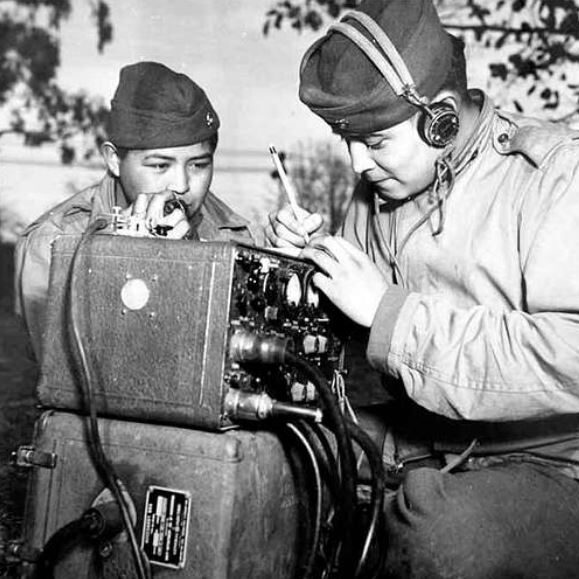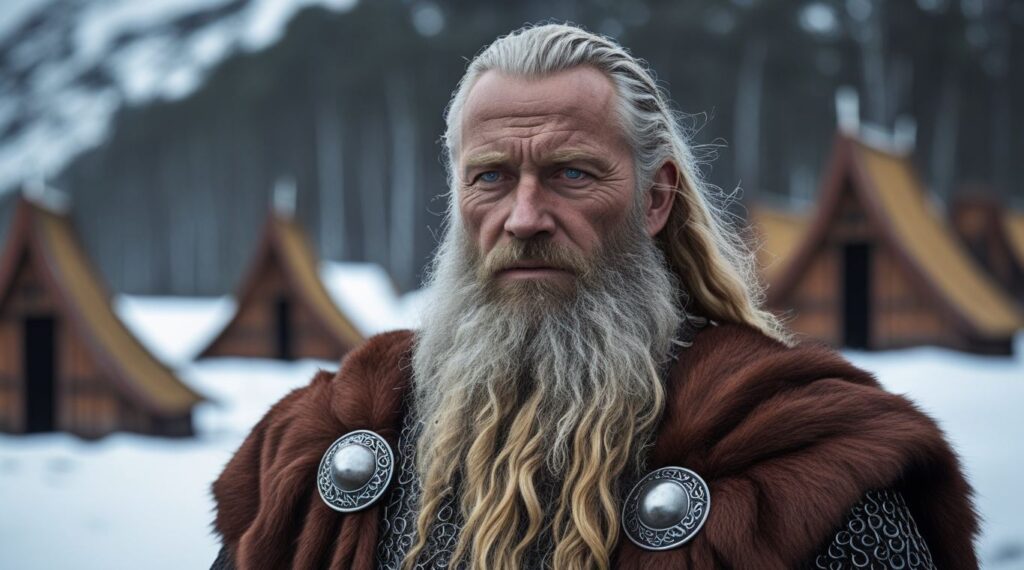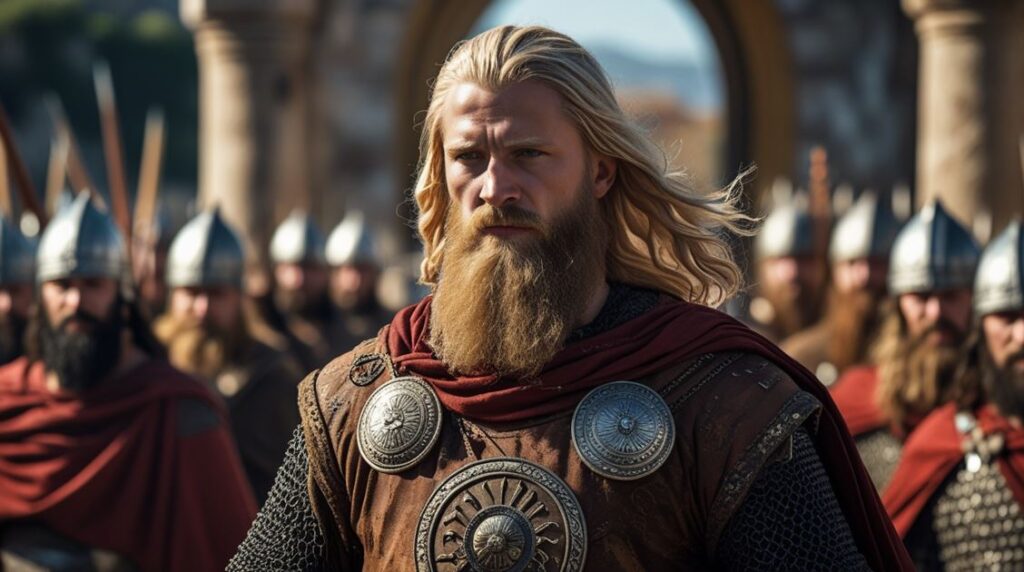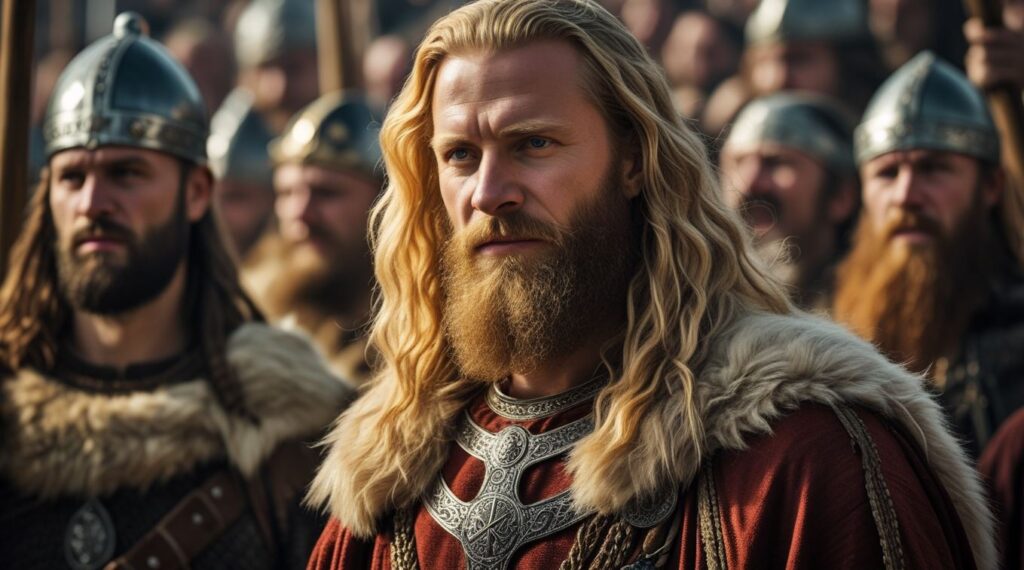The role of Native Americans during World War II was significant. Approximately 150,000 American Indians participated in military service or supported the war effort through agricultural and industrial jobs.
One notable contribution was the use of Native American servicemen as code talkers. They who used their traditional tribal languages to send secret messages, playing a crucial role in the war.
This article will explore the vital role of Native Americans during World War 2.
- 1. Prewar Challenges for Native Americans
- 2. Native Americans: Volunteering and Enlistment
- 3. Key Campaigns Involving Native Americans
- 4. The Navajo Code Talkers Project
- 5. The Comanche Code Talkers of Oklahoma
- 6. Postwar Impact on Native Americans
- 7. Native American’s World War 2 Legacy in American Society
1. Prewar Challenges for Native Americans
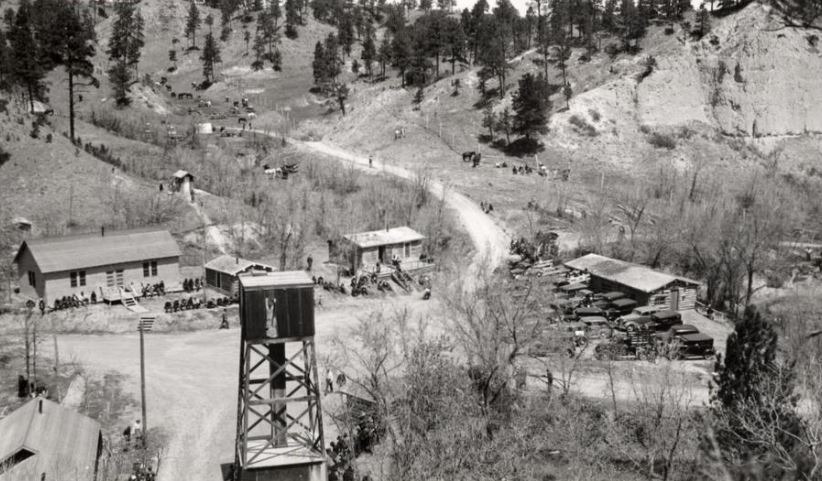
The years leading up to America’s entry into World War 2 were marked by immense hardship for Native American communities across the country.
Much of the native population grappled with the difficulties of life in poverty-stricken reservations. With few employment prospects available on tribal lands, unemployment was rampant. For those who did find work, low-wage seasonal jobs provided little financial stability. The reservations had few means of economic development and little capital investment.
Meeting basic needs like food, shelter, and clothing was a daily challenge.
At the same time, lack of access to education left many native people ill-equipped for existing jobs, let alone Higher opportunities.
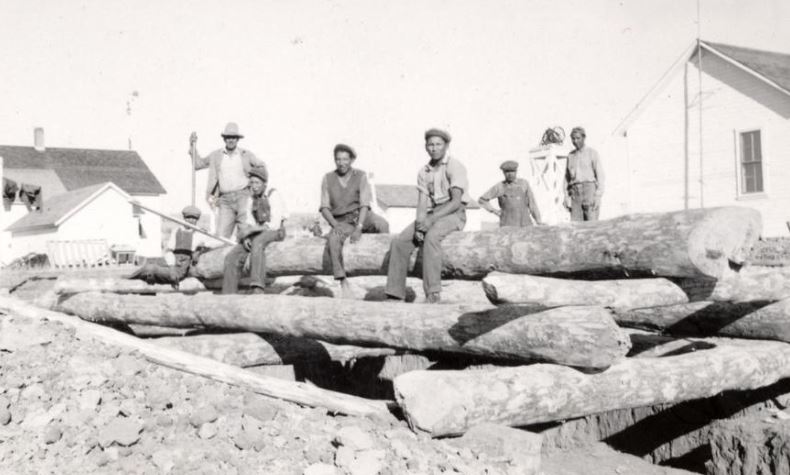
While some reservations operated elementary and junior high schools, funding and infrastructure were woefully inadequate. Most youth received only a rudimentary education through 8th grade, with no access to a high school diploma.
Despite these immense hardships, Native American communities demonstrated incredible strength and resilience.
Facing adversity at every turn as second-class citizens in their own homeland, they refused to surrender their faith, traditions, and cultural identities.
This inner fortitude would prove invaluable when their nation came calling during World War 2.
2. Native Americans: Volunteering and Enlistment
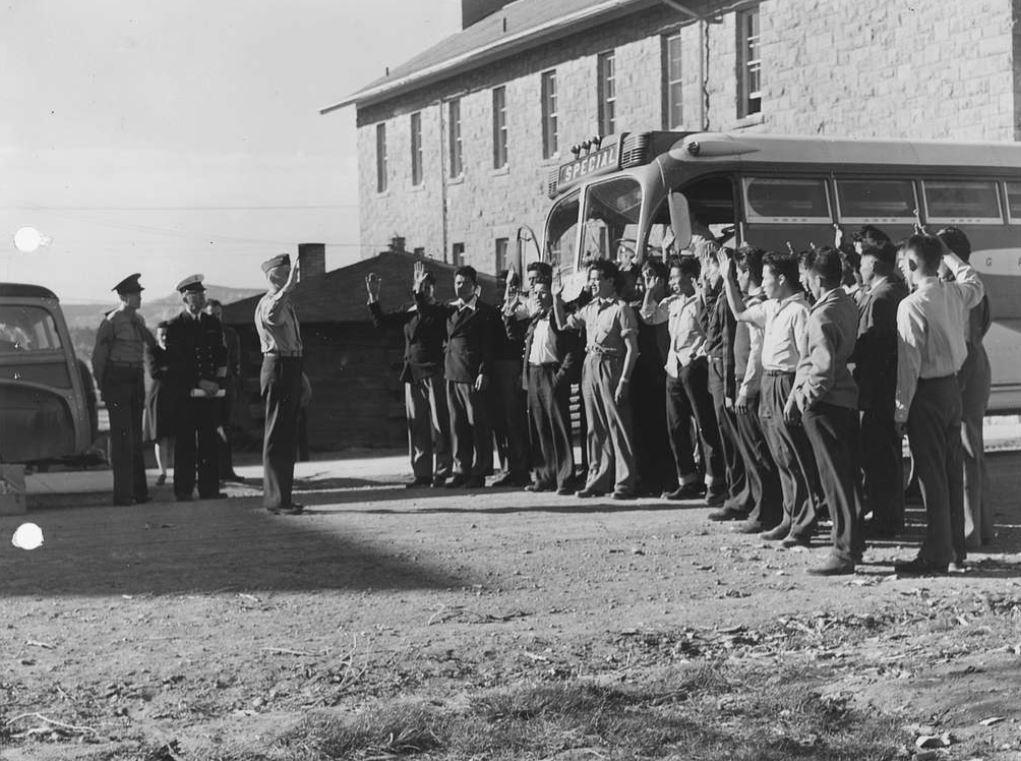
The call to serve during World War 2 resonated across the United States, reaching even the remotest corners of Native American reservations.
However, the response within these communities was far from uniform. The draft, a mechanism intended to conscript able-bodied individuals into military service, stirred a myriad of emotions and opinions among Native Americans.
In some instances, the draft was met with a sense of duty and patriotism. Many Native Americans saw this as an opportunity to actively contribute to the defense of their country, an allegiance rooted in a profound connection to the land.
Some Native Americans, despite being in a precarious position regarding citizenship, saw military service as a means to actively participate in shaping their own destinies and challenging preconceived notions about their loyalty and commitment to the nation.
Others, however, harbored reservations and hesitations, questioning their status as citizens and the treatment they would receive upon enlisting.
This mixed reaction can be attributed to a complex interplay of historical context, cultural identity, and the relationship between Native American communities and the U.S. government.
3. Key Campaigns Involving Native Americans

Native Americans played pivotal roles in several key battles and campaigns, showcasing their dedication and resilience on the battlefield.
From the iconic Normandy invasion to the fierce fighting in the Pacific, including Iwo Jima and the liberation of the Philippines, their contributions were integral to the success of these campaigns.
Whether on European or Pacific fronts, Native American soldiers faced the harsh realities of war with courage and tenacity. Key battles included:
| Theater/Campaign | Examples of Key Battles | Years |
| European Theater | – Normandy Invasion | 1944 |
| – Liberation of Paris and Belgium | 1944 | |
| – Battle of the Bulge | 1944-1945 | |
| Pacific Theater | – Iwo Jima | 1945 |
| – Liberation of the Philippines | 1944-1945 | |
| – Various island campaigns | 1943-1945 | |
| North Africa | – Defense of Baton and Corregidor | 1942 |
| Italian Campaign | – Participation in the 45th Infantry Division fighting in Italy | 1944-1945 |
| D-Day Landings | – Comanche Code Talkers at Normandy | 1944 |
| South Pacific | – Crucial role of Navajo Code Talkers in island campaigns | 1943-1945 |
| Battle of the Bulge | – Participation in the 4th and 88th Divisions | 1944-1945 |
| Miscellaneous Campaigns | – 19th and 180th Infantry Regiments | Various |
| – 147th Artillery Regiment | Various | |
| – Participation of Oklahoma National Guard Units | Various |
Examples of Honors Received by Native Americans
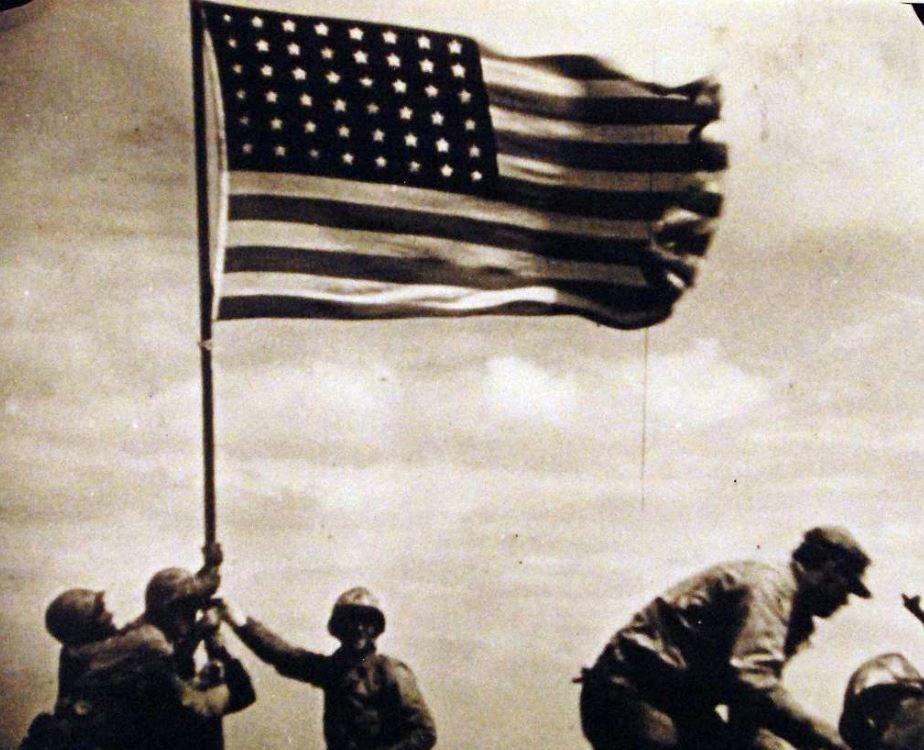
There were several prominent Native American service members who were awarded high military honors for their service in World War 2:
- In 2001, the original twenty-nine Navajo “code talkers” received the Congressional Gold Medal, and subsequent code talkers received the Congressional Silver Medal.
- Ira Hayes – Pima Marine infantryman who helped raise the flag at Iwo Jima. Received the medal of Honor.
- Charles George – Northern Cheyenne Army private who received the Congressional Medal of Honor for bravery in France.
- Ernest Childers – Cherokee Marine who received the Navy Cross for smothering a grenade with his body to save his comrades at Iwo Jima.
Challenges Faced By Native Americans on the Battlefield
The valor of Native American soldiers on the battlefield was matched only by the challenges they confronted.
Mistaken identity and discrimination, disheartening yet prevalent, cast shadows on their service during World War 2.
Mistaken Identity
Native American soldiers often found themselves victims of mistaken identity, accused of being the enemy. The irony of being misidentified as enemies by their fellow American soldiers added an agonizing dimension to their experiences.
Discrimination Within Ranks
Discrimination presented a unique set of challenges for Native American soldiers. Prejudices rooted in historical misconceptions and cultural misunderstandings manifested on the battlefield.
If injured or taken as prisoners of war, Native soldiers reported incidents of their wounds not receiving proper care or supplies due to their ethnicity.
There were even suspicions they would be left behind if it meant delaying the rest of their unit. This lack of equal concern for Native lives showed the lingering racist attitudes that devalued them as expendable.
Derogatory slurs and racial taunts from fellow recruits were common. Often used to provoke a reaction were a part of many Native servicemen’s daily experience as well.
4. The Navajo Code Talkers Project
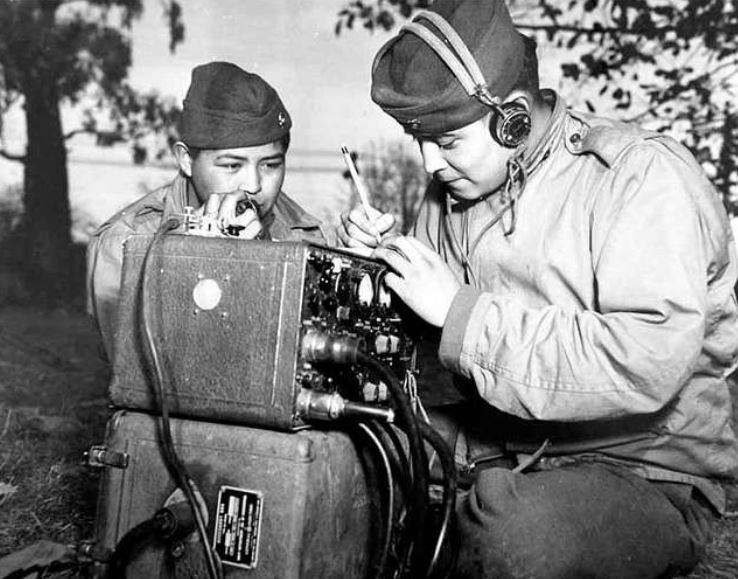
The Navajo Code Talkers Project had a key role in World War 2.
In 1942, 29 Navajo men joined the U.S. Marines and developed an unbreakable code used in the Pacific during World War II.
Navajo, with its complex syntax and unique tonal qualities, was an ideal choice for creating an unbreakable code. The intricate nature of the language, coupled with its limited speakers outside the Navajo community, ensured a level of secrecy crucial for wartime communication.
The intricacies of the Navajo Code Talkers Project lie in the transformation of the Navajo language into an unbreakable military code.
The Navajo language’s lack of a written alphabet and its relative obscurity outside the Navajo community ensured a high level of secrecy.
Each word in English was assigned a corresponding code word in Navajo, with carefully chosen synonyms and intricate linguistic constructions adding layers of complexity.
This innovative use of the Navajo language played a pivotal role in securing communication lines, confounding enemy codebreakers throughout the conflict.
Role and Impact of Navajo Code Talkers in the South Pacific
The United States Marine Corps deployed Navajo Code Talkers to the Pacific theater beginning in 1942.
- The Code Talkers played a pivotal role in the grueling Battle of Iwo Jima in early 1945. Working around the clock through the 36-day campaign, they encoded and decoded messages to coordinate artillery barrages and maneuvering infantry units. Without prearranged codes that could be rapidly transmitted, it’s said the fight to take the island may have lasted months longer. The Code Talkers’ efforts are credited with saving thousands of U.S. lives.
- They also proved instrumental in other key island assaults across the Pacific. During the liberation of Guam, the Code Talkers sent messages around the clock to assist marines in outflanking Japanese forces. Their unbroken code enabled swift adjustments to plans of attack as enemy movements shifted.
- At Bougainville and Guadalcanal, the Code Talkers reduced response times for distress calls and requests for reinforcements, bolstering troop morale and survival chances against the heavily fortified Japanese defenders.
Their communications prowess greatly accelerated operations and supported greater mission success rates.
Did the Japanese ever break the Navajo code? The Japanese were never able to break the Navajo code.
Did any Navajo code talkers get captured? The threat of capture was actually greatest from their own side. During World War 2, there are several reported instances of U.S. Marines and Army troops wrongly mistaken Navajo code talkers who served in the Pacific as Japanese and captured them. As a result, several Navajo code talkers were assigned a personal bodyguard to protect them from their own side.
Recognition and Awards Received by the Code Talkers
What happened to the Navajo Code Talkers after the war? The original 29 Code Talkers included individuals like Charlie Sosie Begay, Chester Nez, amongst others. But they returned home without any praise or recognition and largely went back to their prewar lives.
The Navajo Code program remained classified until 1968, and it wasn’t until 1982, when President Ronald Reagan declared Aug. 14 as National Code Talkers Day that some recognition was given. Further recognition came in 2000 when honoring the Navajo Code Talkers Act was signed into law, followed by the awarding of the Congressional Gold Medal in 2001, one of the nation’s highest civilian honors.
This recognition not only celebrated individual bravery but also underscored the collective achievement of turning a native language into a crucial tool for securing victory.
5. The Comanche Code Talkers of Oklahoma
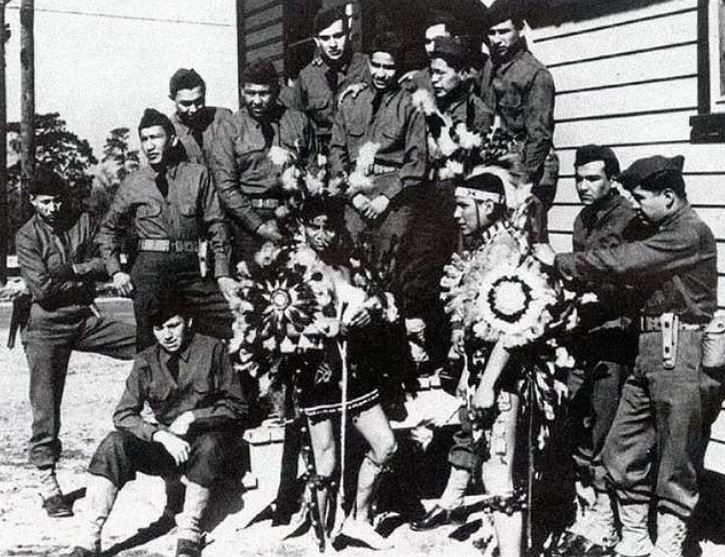
It was not just the Navajo language used in code talking during World War 2. Other indigenous languages were usedincluding Cherokees, Cheyennes, and Osages were also used as code talkers. The Comanche Code Talkers in particular were instrumental during the D-Day landings at Normandy in 1944.
Seventeen Comanches were recruited in December 1940 for Code Talking. Their training at Fort Benning, Georgia, resulted in the development of an unbreakable Comanche-language code.
During the Normandy invasion, thirteen of these Comanche Code Talkers maintained wire telephone lines. This ensured secure message transmission in pivotal battles across France, Luxembourg, Belgium, and Germany.
The Comanche Code Talkers played a crucial role in maintaining secure communications throughout the invasion. They transmitted messages regarding troop movements, artillery fire, and other sensitive information, helping to coordinate military operations and protect Allied forces.
Their ability to communicate securely in their native language helped to prevent the enemy from intercepting and decoding sensitive military information.
The Code Talkers Recognition Act, signed in 2008, brought federal recognition, honoring the individual service of Code Talkers and their tribes.
Code Talkers have been celebrated at tribal, state, and national levels. This included recognition by the French government through the Chevalier de L’Order National du Merite.
6. Postwar Impact on Native Americans
The aftermath of World War 2 brought about significant changes and challenges for Native Americans in the United States. The war had a profound impact on their communities, culture, and way of life.
Economic Disruption:
- The war led to a decline in traditional economic activities for many Native American tribes. Many young men who had previously engaged in hunting, fishing, and farming were drafted into the military. This led to a void in the workforce.
- The loss of manpower and disruption of traditional economic activities resulted in a decline in income and economic stability for many Native American families.
Governmental Racism:
- The war accelerated the assimilation policies of the federal government. The Indian Termination Act of 1954 aimed to terminate the federal government’s recognition of Native American tribes and dissolve their reservations.
- This policy sought to assimilate Native Americans into mainstream American society by encouraging them to abandon their cultural traditions and adopt Euro-American ways of life.
- However, The termination policy led to the loss of tribal lands, the disruption of traditional ways of life, and the erosion of Native American cultures and identities.
- Termination undermined tribal sovereignty and self-governance by ending the federal government’s recognition of tribes as distinct political entities.
- The Indian Termination Act sparked resistance and activism among Native Americans, who fought to protect their rights, lands, and cultures. The termination policies of the federal government and the ongoing discrimination they faced led to the emergence of Native American rights movements.
- Organizations like the National Congress of American Indians (NCAI) and the American Indian Movement (AIM) advocated for the protection of Native American rights, the preservation of their cultures, and the recognition of their sovereignty.
Urban Migration:
- The postwar period witnessed an increase in urban migration among Native Americans. Many Native Americans left their reservations in search of better economic opportunities and to escape the poverty they faced in rural areas.
- This migration led to the growth of Native American communities in urban centers, where they faced new challenges related to housing, employment, and cultural identity.
Health Disparities:
- Native Americans continued to experience significant health disparities compared to the rest of the population. The war exacerbated these disparities as many Native American veterans returned home with physical and mental health issues.
- The lack of access to adequate healthcare services on reservations and in urban areas contributed to the persistence of health problems among Native Americans.
Self-Determination:
- The self-determination movement gained momentum in the postwar era. Native American tribes began to assert their right to self-governance and to manage their own affairs.
- This movement led to the passage of landmark legislation such as the Indian Self-Determination and Education Assistance Act (ISDEAA) of 1975. This legislation provided tribes with greater control over their education, healthcare, and other programs.
Cultural Revival:
- The postwar period also witnessed a resurgence of interest in Native American culture and traditions.
- Native American artists, writers, and activists played a crucial role in promoting their cultural heritage and challenging stereotypes.
- This cultural revival helped to foster a sense of pride and identity among Native Americans. It also contributed to the broader recognition of their unique contributions to American society.
The postwar impact on Native Americans was complex. War brought about economic disruption, cultural assimilation, and health disparities. But it also sparked a movement for self-determination, cultural revival, and political activism. These developments laid the foundation for ongoing efforts to address the challenges faced by Native Americans and to promote their rights, sovereignty, and cultural preservation.
7. Native American’s World War 2 Legacy in American Society
The legacy of Native American contributions during World War II reverberates through American history.
Their stories form an integral part of the broader narrative. Highlighting the intersectionality of their identities and the profound impact of their commitment to the defense of freedom and democracy.
The war not only changed the lives of Native Americans but also eventually led to a shifting societal perspective. The war eventual influenced the postwar civil rights movement and reshaping the trajectory of Native American history.

